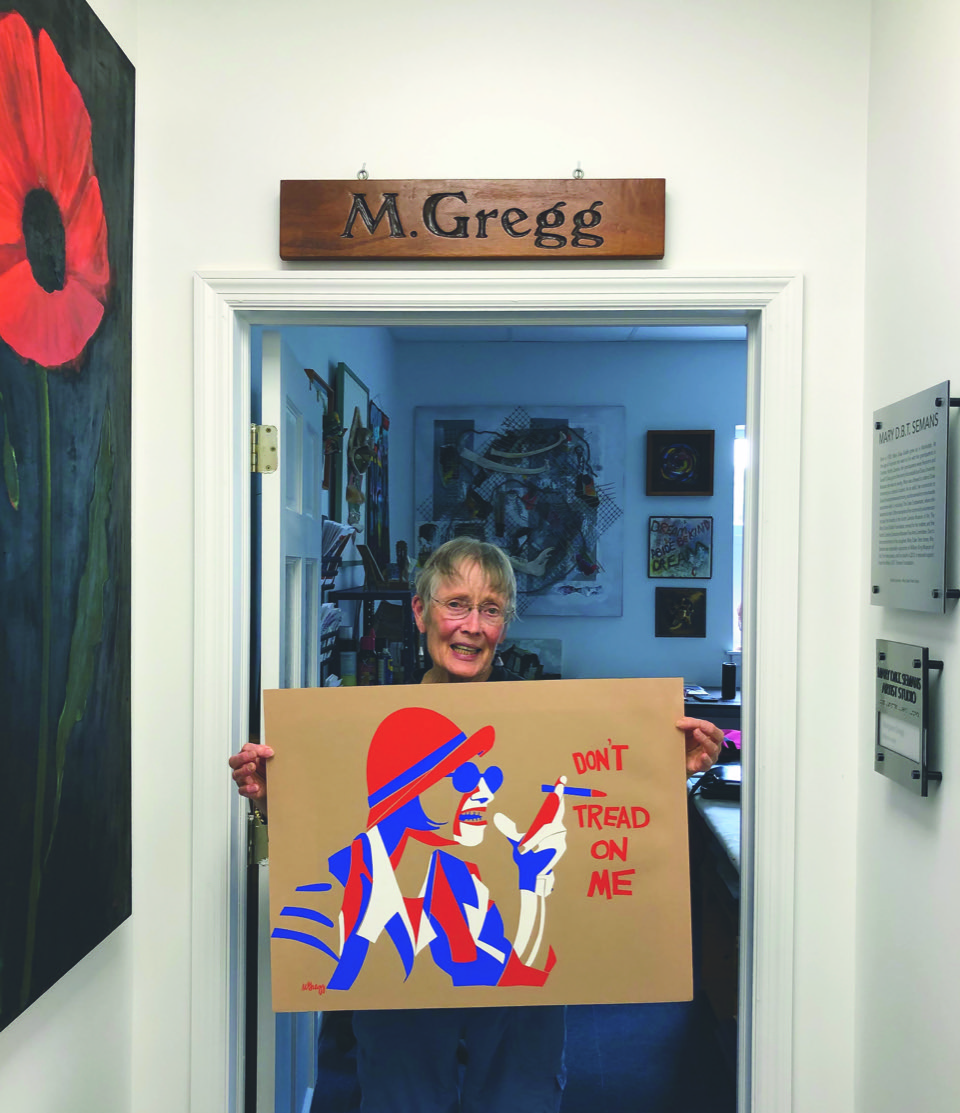

Silkscreen by Margaret Gregg.
Artist and social activist, Margaret Gregg (formerly Sister Mary Ruth) began her art education when she was in a training program to become a Glenmary Sister. TheGlenmary Sisters’ mission was to help people in the South and Appalachia to become self-supportive and break the reins of poverty.
“It was apparent that I had some ability and passion to design and create pieces to hang and to print. I did layout and design for the community publications and textile pieces for community and liturgical celebrations. As a Glenmary Sister, I completed undergraduate study at Mt. St. Joseph College and continued work in publications as well as a few large textile pieces for community facilities. I also began some community art projects in Big Stone Gap, Virginia. This was in the early 1960s,” Gregg says.
Her art and politics have always gone hand-in-hand — not because she necessarily planned it that way, but because of the times she was working in. Her art and social activism just naturally grew together.
“It wasn’t like ‘Now I’m going to do political art.’ I was living in times and places of unrest, upheaval, alternatives and working with people involved ecumenically, politically, regionally and culturally. We got into the scene and divided up the work according to skills, resources and ability to commit. For me it was at the level of dreaming, listening and defining and then getting into the visual images in posters and banners,” she says.
Beginning in the era of posters and banners, she’s made textiles her specialty.
“Textiles offered a quick and affordable way to deal with big spaces. Textiles and needle arts were a familiar skill with the community people I was working with in Wise County, Virginia, and Claiborne County, Tennessee. It gave us a way to work cooperatively and have products to exhibit and sell at fairs and gatherings.
The issues which most interest Gregg now are aging in relation to creativity and technology (she just observed her 80th birthday), the environment, conversation and compromise in diverse groupings and adequate housing and medical services.
She originally began to express her creativity for church-related programs and then community projects. Now she focuses on her personal take on aesthetics and skill and spontaneity. She also asks herself some questions before she begins a new piece — some practical and some not.
“Do I need to make money? Do I need to serve this individual or group? Do I need to go deeper into my conscious, unconscious soul fire? How can I establish media skills, techniques that work for me,” she asks?
Gregg, who is a studio artist at William King Museum of Art, Abingdon, Virginia, received her bachelor’s degree in 1964 from the College of Mount St. Joseph in Cincinnati, Ohio, and her master’s from Cambridge-Goddard Graduate School for Social Change in Plainfield, Vermont, in 1972. In the 1960s, she became noted for creating poster art for social movements in the Appalachian region. She subsequently attended Columbia College in Chicago; the University of Tennessee in Knoxville; the Banff Centre School of Fine Arts in Alberta, Canada; and received her Master of Fine Arts from East Tennessee State University in 1992.
Gregg has worked as a studio artist, a faculty member of the Lithuanian Institute of Art in Vilnius and at East Tennessee State University. She directed Mill Creek Art Place in Limestone from 1994 to 2007. She was also a graphic artist for NCI Appalachia Leadership Initiative, research coordinator for the James Agee Film Project, and executive director for Broadside Television, Incorporated. Commissions include work with the National Cancer Institute’s Appalachian Initiative on Cancer, Federation of Communities in Service, various churches, libraries and private residences.
THERE'S MORE: Bridges explores power dynamics in her artwork